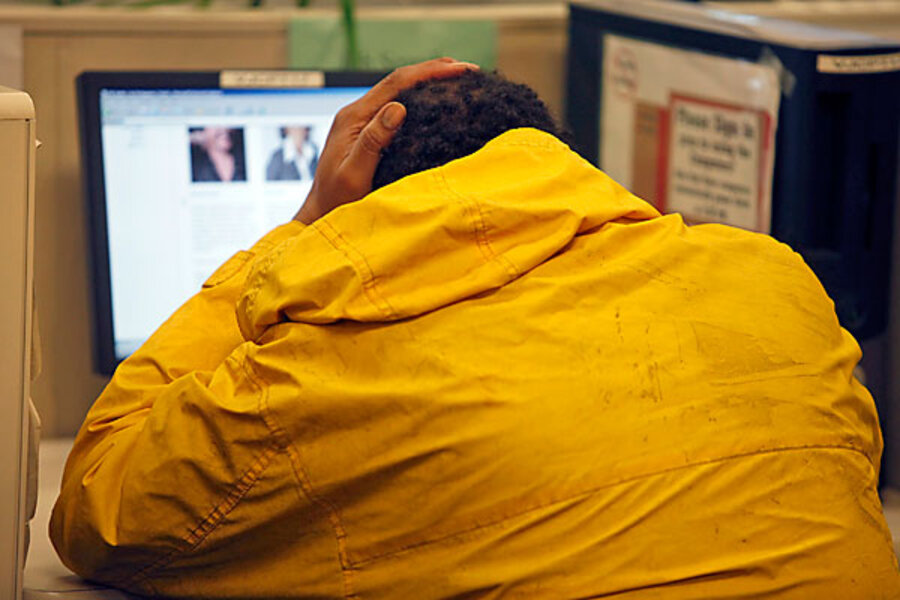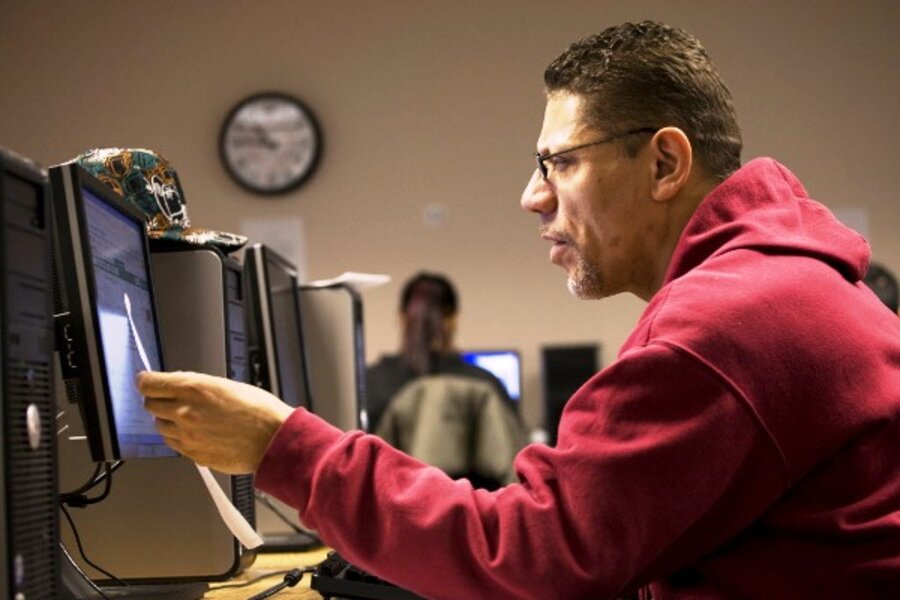Number of long-term unemployed hits highest rate since 1948
| New York
It is a national challenge: reduce the number of people who have been out of work for a long time.
On Friday, in the December unemployment report, the Bureau of Labor Statistics said the number of people out of work for 27 weeks or more hit 6.1 million Americans, or 40 percent of all 15.3 million jobless. This is the most since 1948, when the data was first recorded, according to the Department of Labor. On average, it now takes 20.5 weeks to find a new job – double the amount of time in the 1982-83 recession.
Many of the long-term unemployed are older workers, but some are the very young who were the first fired. A significant percentage of them don’t have a college degree, but some do. And many of them are now so discouraged they have lost their belief that a job exists for them.
Many feel shut out of the system
“It’s a real risk to the workplace,” says John Challenger of Challenger, Gray & Christmas, the outplacement firm in Chicago. “We may be creating a permanent group of people who think there are no jobs out there, who feel they are shut out of the system.”
Part of the reason the nation has such a large number of long-term unemployed is related to the nature of the downturn, says economist Richard DeKaser of Woodley Park Research in Washington.
“This is not your typical cyclical downturn where hiring is just postponed until business improves,” says Mr. DeKaser. “This is really more about structural unemployment.”
Entire industries have been hobbled, such as construction, some elements of financial services, and the auto industry.
Another problem for the long-term unemployed is their inability to match existing skills to available jobs, says DeKaser. For example, 1.8 million construction jobs have been lost since December 2007. However, hiring continues in the healthcare and education fields.
“Your typical construction worker cannot migrate to those areas of the market,” says DeKaser.
Job competition favors those who've recently worked
The long-term unemployed also have another problem: explaining to an employer why they have been out of work for so long, says Mr. Challenger.
“Potential employers wonder why didn’t someone hire this person,” says Challenger. “As the economy recovers and someone who has been out of work for 45 days is competing against someone out of work for nine months, companies tend to take the person who is newly minted.”
Challenger wonders if the large number of long-term unemployed will result in the unemployment rate remaining high for some time. In fact, many economists expect that as the jobs market improves, some of the long-term unemployed (those no longer looking for work) will return to the workforce, pushing up the unemployment rate, now at 10 percent.
“It could be an obstacle to it coming down,” says Challenger.
To try to help the long-term unemployed, the nation needs to beef up its retraining and community college efforts, Challenger says. But, he adds, “they also need support on how to find a job and be uplifted and counseled through the emotional issues that come from constant rejection.”
-----
Follow us on Twitter.






